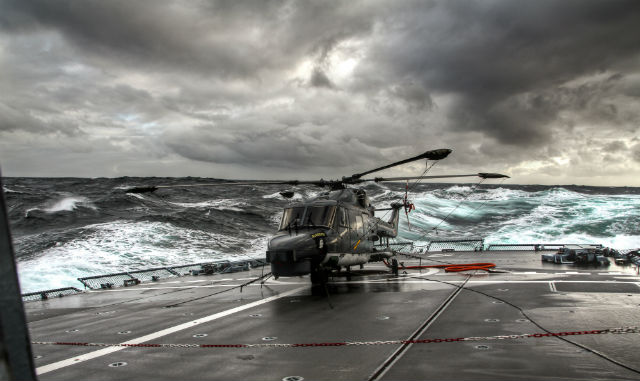Germany will next year launch a competition for the replacement of its navy’s fleet of 21 Westland Sea Lynx anti-submarine warfare (ASW) helicopters and aims to have made a selection by the end of 2017.
The retirement deadline for the Sea Lynx is “2025 sharp” says Capt Matthias Potthoff, commander of naval air forces, “so we have to have a [platform] available in 2023 in order to begin training.”
Berlin’s acquisition process is currently running to schedule, he says, but it cannot afford any slippages, he adds.
“We have initiated the analysis phase and we are in the process to start the formal programme. We will make a decision next year,” he says.
Potthoff was speaking at an event in Donauwörth to mark the first flight of the NH Industries NH90 Sea Lion which will replace the German navy’s Sea King fleet for search and rescue and transport missions.
It is the service’s first new helicopter since the delivery of the Sea Lynx in the early 1980s, and is a likely candidate to replace the UK-built rotorcraft as well.
The Sea Lion is based on the standard NFH maritime variant and could be easily converted for an ASW role.
“You could adapt it very quickly,” says Sea Lion programme manager Rüdiger Georg. “All the provisions are in the helicopter for the weapons – the basic harnesses are the same.”

Bundeswehr
Germany’s decision is complicated by a parallel replacement process for its frigates. The F122- and F123-class vessels are being retired, although the latter does not leave service until the late 2020s or early 2030s, says Potthoff.
Although the NH90 can land on their helidecks, it cannot embark on the ships due to the small size of their hangars. The older frigates are being replaced by the F124- and F125-class vessels, which are compatible with the Sea Lion, however.
The NH90 will also face competition from Leonardo’s AgustaWestland AW159 Wildcat, the ultimate successor to the Sea Lynx, and probably the Sikorsky S-70B Seahawk.
The Deutsche Marine will be able to get a close look at the Wildcat next year when a UK Royal Navy-operated example is deployed on one of its ships as part of a co-operation exercise.
Berlin has set such a hard deadline for the replacement of the Sea Lynx due to dwindling availability rates.
A recent internal German defence ministry report, published on the Augen Geradeaus! website, reveals that only a maximum of five of 21 aircraft were able to be deployed during 2016.
Source: FlightGlobal.com























